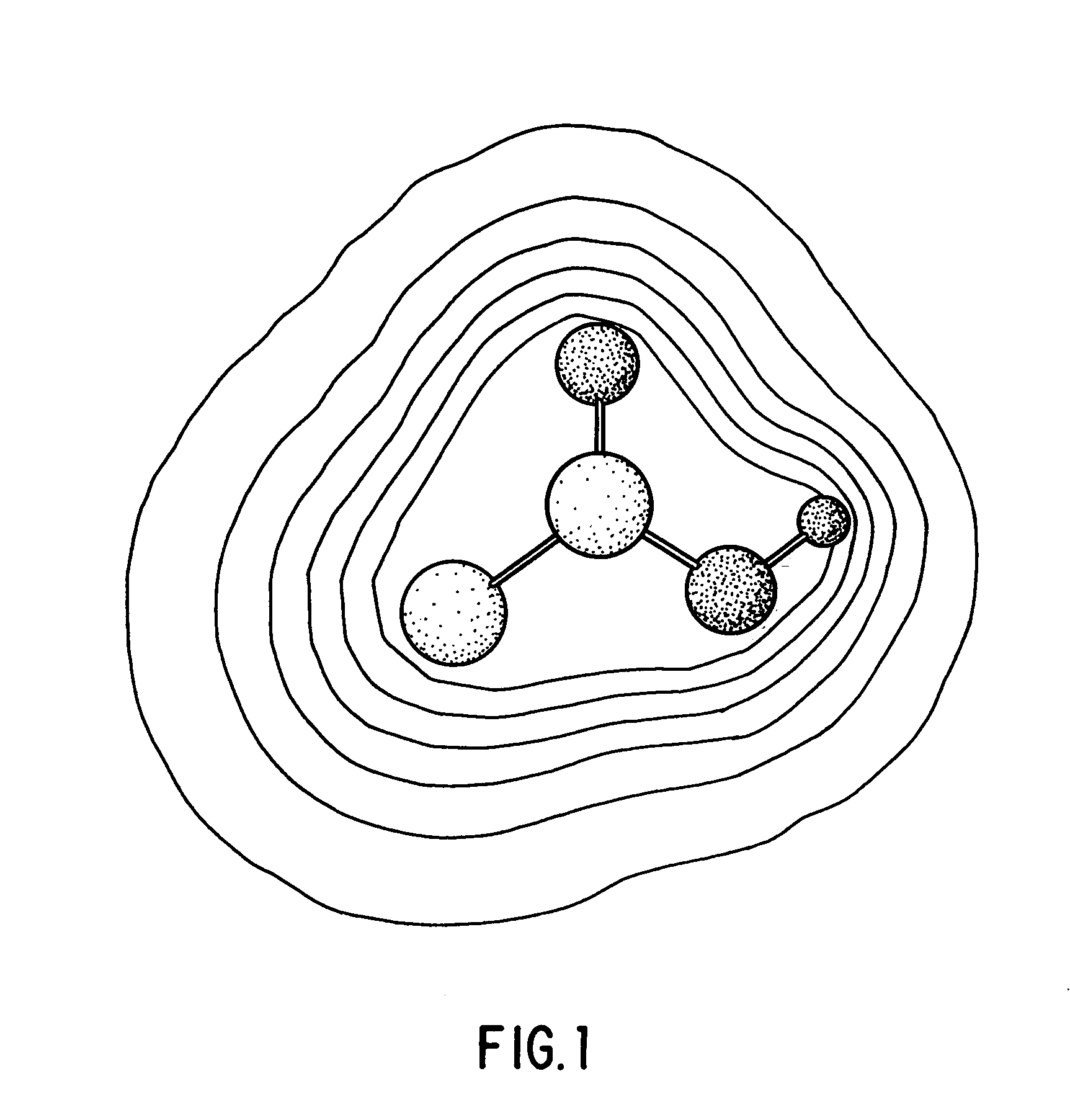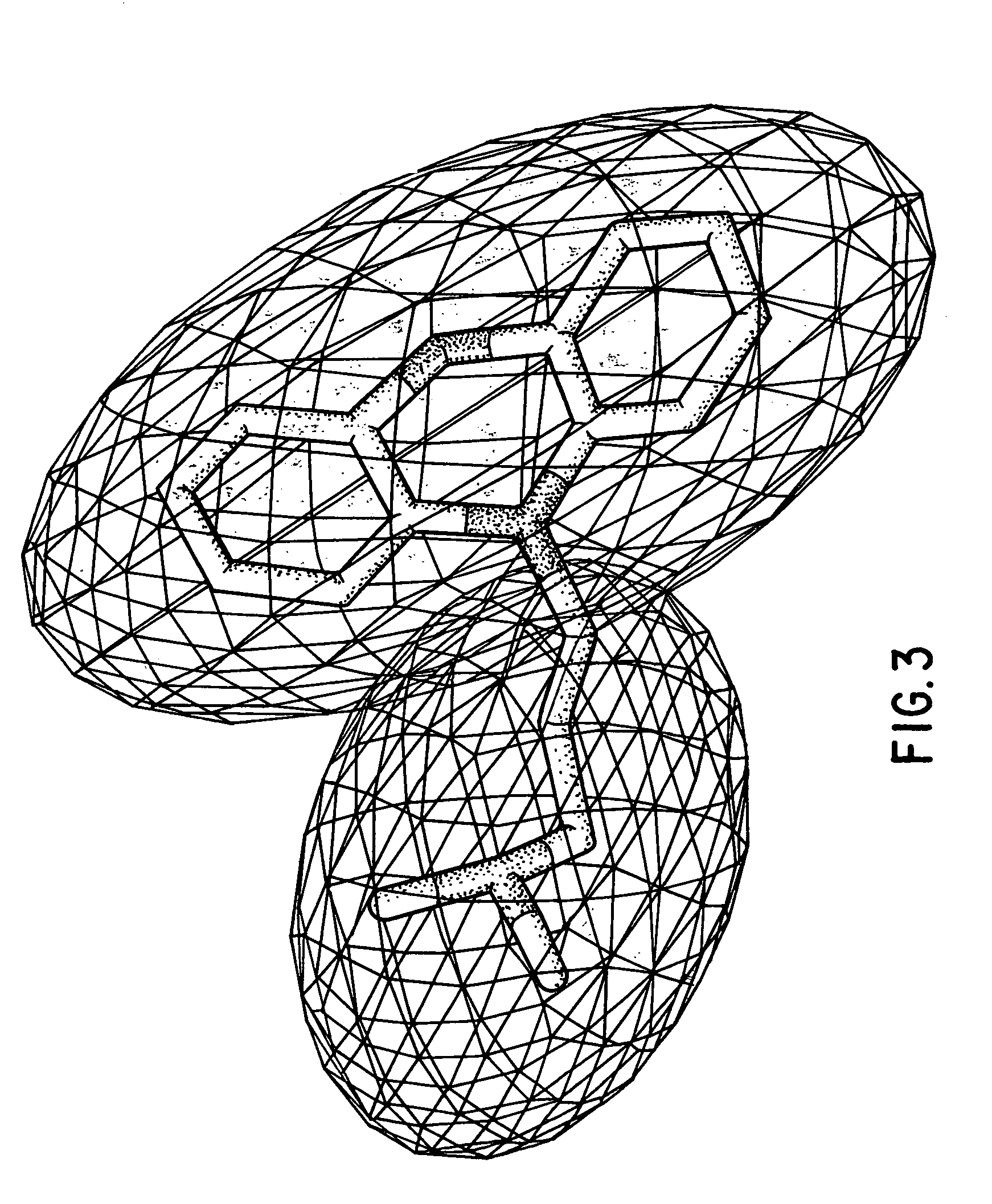Method for determining a shape space for a set of molecules using minimal metric distances
a technology of metric distance and shape space, applied in the field of methods and apparatus for comparing molecules, can solve the problems of not being the best “global” solution, and not being sur
- Summary
- Abstract
- Description
- Claims
- Application Information
AI Technical Summary
Benefits of technology
Problems solved by technology
Method used
Image
Examples
implementation and examples
[0089]Specific implementations and examples of the foregoing include the following:[0090]1: Finding The Maximal Overlap (Minimal Field Difference) Between Two Fields A And B[0091]2: Refining The Search Position Via Numerical Or Analytical Derivatives[0092]3: Determining The Shape Space Of A Set Of Molecules[0093]4: Calculating The Position Of A New Structure In A Preconstructed Shape Space[0094]5: Extending The Shape Space[0095]6: Calculating The Maximal Overlap Between A New Structure And A Large, Previously Shape-Space Decomposed Set Of Molecules[0096]7: Using The Shape Space Description To Correlate With Known Biological Activity[0097]8: Examples Of Using The Minimum Field Difference Metric To Organize A Database Of Molecules[0098]9: Examples Of Using The Shape Space Positions To Organize A Database Of Molecules[0099]10: Local Domain Decomposition[0100]11: Constructing An Ellipsoidal Gaussian Representation (EGR).[0101]12: Construction Of Multiple EGR's Containing The Same Number...
PUM
| Property | Measurement | Unit |
|---|---|---|
| distance | aaaaa | aaaaa |
| shape | aaaaa | aaaaa |
| metric distances | aaaaa | aaaaa |
Abstract
Description
Claims
Application Information
 Login to View More
Login to View More - R&D
- Intellectual Property
- Life Sciences
- Materials
- Tech Scout
- Unparalleled Data Quality
- Higher Quality Content
- 60% Fewer Hallucinations
Browse by: Latest US Patents, China's latest patents, Technical Efficacy Thesaurus, Application Domain, Technology Topic, Popular Technical Reports.
© 2025 PatSnap. All rights reserved.Legal|Privacy policy|Modern Slavery Act Transparency Statement|Sitemap|About US| Contact US: help@patsnap.com



